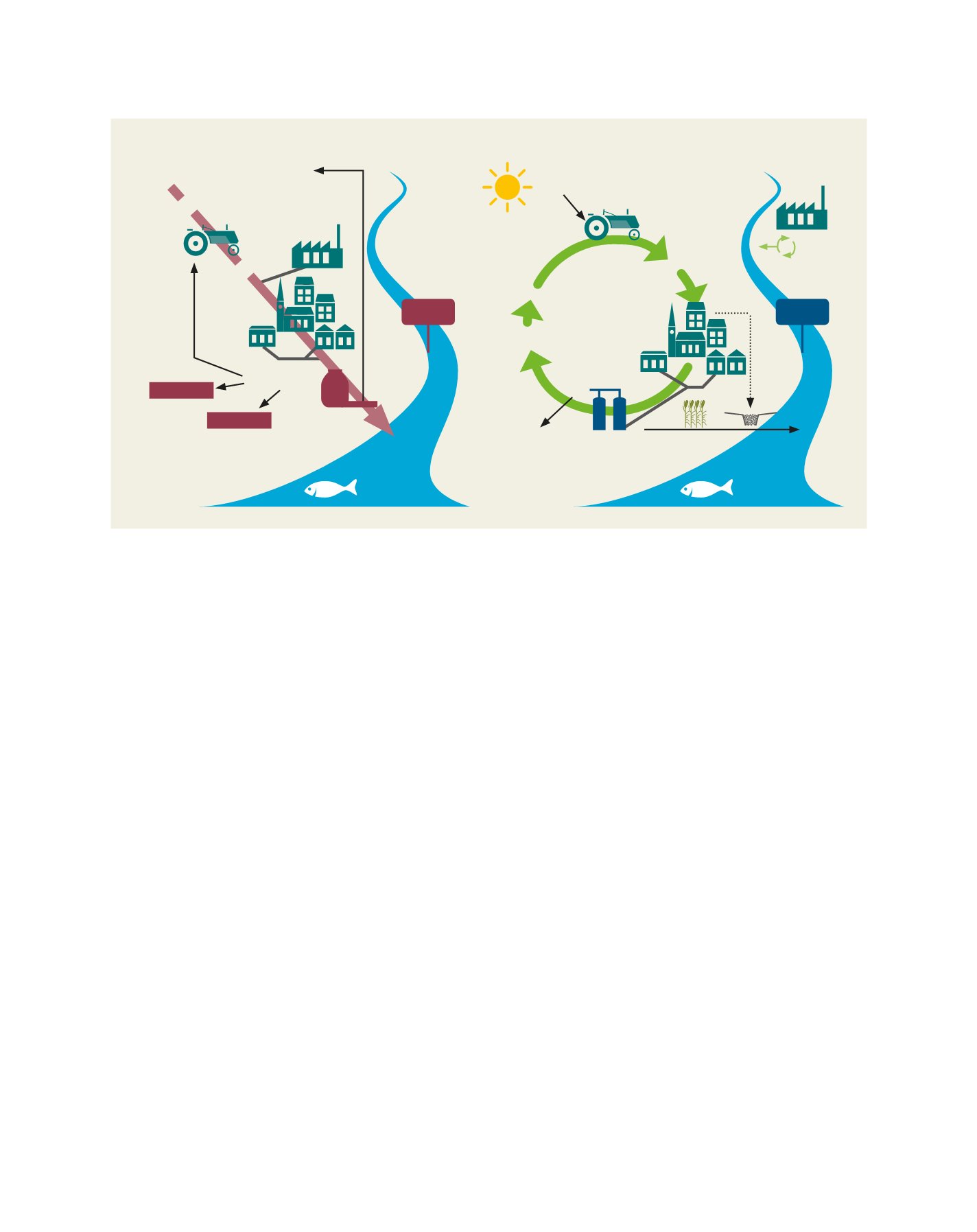

[
] 43
access
to
water
and
sanitation
for
all
The SuSanA-network – moving to a systems approach
Sunita Narain, director of Centre for Science and Environment,
New Delhi, India, reports that: “The biggest ever sanitation
programme, the Clean India Campaign (Swachh Bharat),
instigated by Indian prime minister Narendra Modi, has
broadened its focus from ODF (open defecation-free) to
ODF++ (including waste water, septage, greywater and faecal
sludge management).”
9,10,11
The mission of the Indian govern-
ment and an engaged community of experts had originally
begun with the slogan “Toilets before Temples,” yet this was
the first step in an extended mission. Now, with ODF++, the
focus has moved beyond the toilet to include various other
elements of the sanitation chain and particularly an approach
to sanitation from a systems perspective.
For many years, sanitation improvement was often focused
on the construction of latrines without considering aspects
of operation, maintenance and services. However, there has
been increasing awareness globally that building latrines
alone and neglecting the entire sanitation service chain does
not improve public health conditions, and could even be a
cause of environmental deterioration.
This increased awareness was one of the main reasons for
creating the Sustainable Sanitation Alliance, just before the
International Year of Sanitation in 2008,
12
experts having
been concerned that the Year would be oriented towards infra-
structure, thereby potentially worsening the situation. The
alliance was, among other activities, actively involved in the
development of a key publication, spearheaded by the Swiss
Water Research Institute EAWAG, entitled
The Compendium
of Sanitation Systems and Technologies
.
13
A crucial ingredient
of the publication was its provision of iconography to depict
sanitation chains and the ways in which elements could be
linked to the chain using a number of exemplary systems.
Sanitation in the circular economy – closing the loop
The global endorsement of the SDGs calls for a radical
re-thinking of the conventional, accepted approaches to urban
infrastructure in general, and to sanitation in particular.
Changing the basic paradigm from linear flow streams and
disposal towards a cycle-oriented management of renewable
resources has the potential to deliver the kind of change,
and the degree of change, that the SDGs demand.
14,15,16,17
Discussions began at the start of the millennium by Swedish
and German organisations as to the importance of non-
renewable resources like phosphorous and nitrogen as well
as efficient use and recycling (see Fig. 3).
While the new thinking is partly in place for implementing
change in solid waste management, energy, and agriculture
(among many sectors spearheading the changes), the paradigm
shift in sanitation is still embryonic. This lag is exposed by the
fact that forward-looking engineers proposed the shift from
linear to circular systems of managing water and wastewater
(including excreta, and rainwater) in the 1970s.
18
Today, over
40 years later, the circular approach remains the exception.
Some progress has been made, for instance in the under-
standing of urban-rural sanitation value chains, or of sanitation
in the circular economy, hence the idea of using wastewater
and excreta in the safe production of energy, fertiliser or irriga-
tion water is much more broadly accepted in the sector today
than ten years ago. However, as such improvements need cross
and inter-sectoral communication, progress is much slower
than that which is necessary to reach the SDGs holistically.
However, forward-looking projects built on more holis-
tically sustainable sanitation systems do address these
concerns. In the context of German development coop-
eration, such projects receive an additional push from the
German Federal Ministry for Economic Cooperation and
Fig. 3: Comparison of linear- and reuse-oriented approaches to sanitation
Source: adapted from reference 15: Lange, J., & Otterpohl, R. (1996). Abwasser-Handbuch zu einer zukunftsfähigen Wasserwirtschaft
Iconography used to describe closed loop systems by Lange et al. 1996. It compares a linear to a reuse oriented approach to sanitation
Swimming
prohibited
Swimming
allowed
Reduction of
transport energy
C-sink counteracts
global warming
Low water
consumption
Biowaste
Biogas plant
Profit from energy
Improvement of
the humus layer
Food
Infiltration
Food
Fertiliser factory
Fossil phosphate
and potassium
Max. 30% of
nutrients
High water
consumption
Biowaste
Incineration
Landfill
Excess sludge
Energy for
C-degradation
Nitrogen from air
High energy
demand for
nitrification
Soil
Greywater treatment
Accumulation
CH
4
P < 1%
N < 1%
Less carbon
P > 5%
N < 20%
Potassium
Carbon
CO
2
+CO
2
C, P, N, K
















